DESIGNING A BETTER BROWNSTONE (1888)
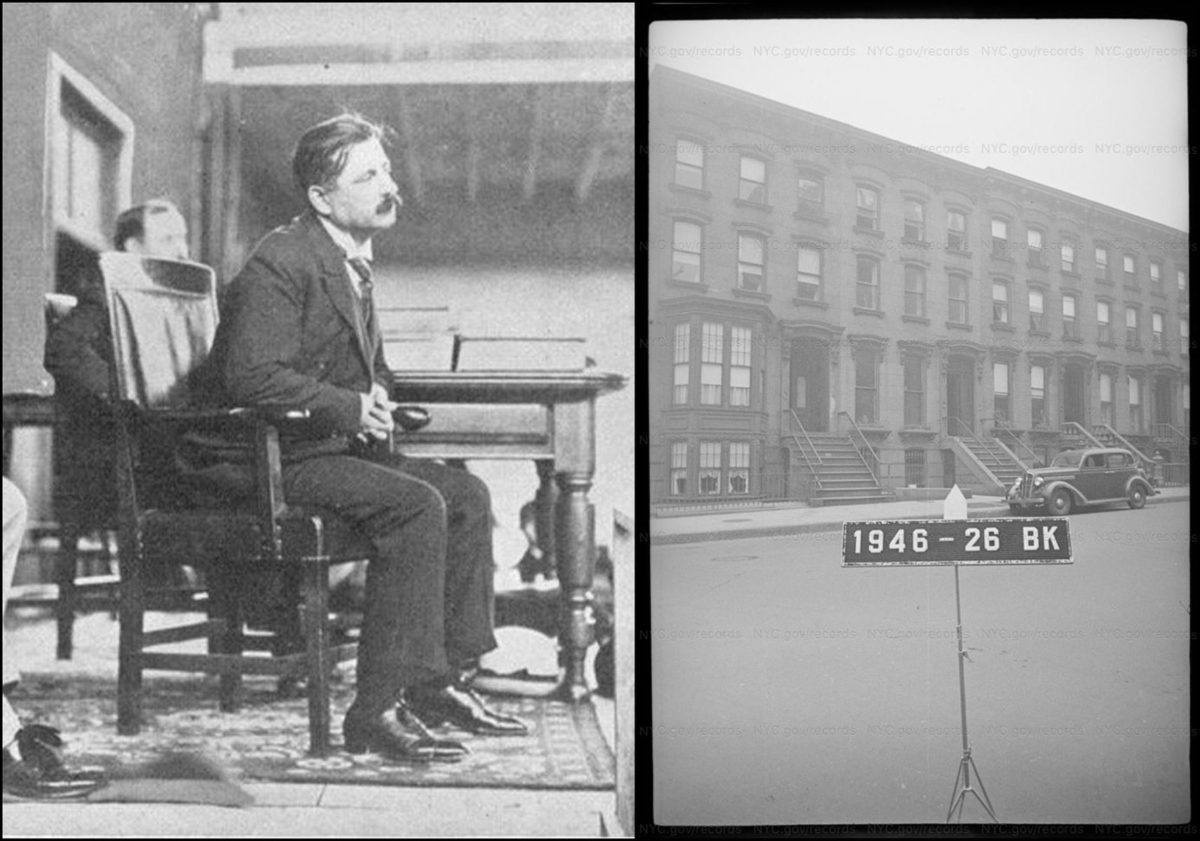
Brownstone Detectives investigates the history of our clients’ homes.
The story you are about to read was composed from research conducted in the course of one of those investigations.
Do you know the history of YOUR house?
********************************************************************************************************************************
Current owners of brownstones know the time and cost investment necessary to renovating the ancient structures. After 125 years or so of constant use and abuse, it is understandable that, like with humans, things tend to sag, break, and otherwise, go out of date.
Thus their constant renovations and redesigns.
But did you know that our brownstones have been undergoing renovations – since they were built?
At No. 278 Lafayette Avenue, an Italianate brownstone in the Clinton Hill section of Brooklyn, one such renovation – likely the rowhouse’s very first – took place in 1888, just 20 years after the construction of the building.
While the redesigned was feted at the time, the owner’s name would go down in infamy…
AN INFAMOUS OWNER OF AN OLD BROWNSTONE
In 1904, an excursion steamship called the General Slocum sank in New York City’s East River. The craft had been chartered to carry members of the St. Mark’s Evangelical Church (a German-American community in Manhattan) to a church picnic when it foundered.
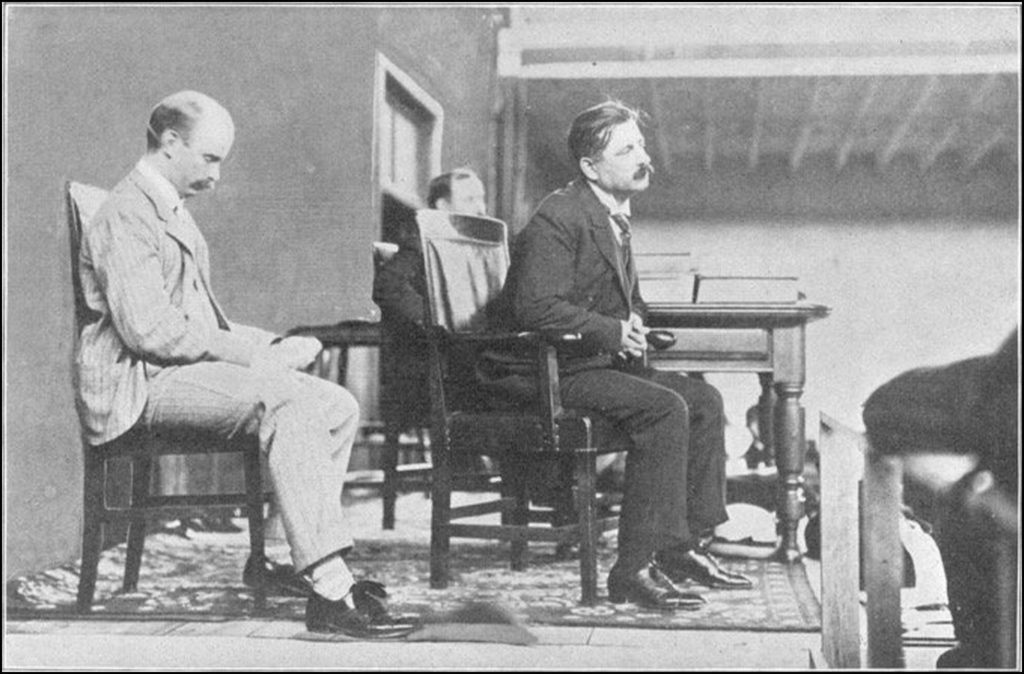
The disaster decimated an entire section of New York City and caused the eventual – though gradual – migration of much of Manhattan’s German population from the downtown area further uptown. The German section had become bathed in black with nearly every other door draped in black crepe and funerals being held daily.
“Throughout the district, hearses lined the curbs, sometimes as many as three abreast,” according to O’Donnell. “Inside the tenements flanked by hearses, several dozen ministers performed brief funeral rites. In some buildings, funerals occurred simultaneously on several floors.”
It could be understood, in retrospect, that the survivors of this tragedy wanted to escape such a sorrowful atmosphere.
The General Slocum disaster was the New York area’s worst disaster in terms of loss of life until the September 11, 2001 attacks. It is the worst maritime disaster in the city’s history, and the second worst maritime disaster on United States waterways.
At the inquest held after the disaster, the president of the Knickerbocker Steamship Company, which would be held responsible for the sinking, testified. He was former real estate broker, Frank A. Barnaby, who, during the investigation into the sinking, was forced to post a $20,000 bond.

By the time of the Slocum disaster, Barnaby was living in the Clinton Hill section of Brooklyn at No. 307 Greene Avenue (which no longer exists – it is a garden now).
Sixteen years before the incident, however, Barnaby was comfortably ensconced in a brownstone house just a few blocks away at No. 278 Lafayette Avenue. This brownstone he had recently purchased and moved into, and it soon became the focus of a Brooklyn Daily Eagle article.
But not before a good remodeling…
RENOVATING AT NO. 278 LAFAYETTE AVENUE (IN 1888)
In the present day brownstone corridors of modern New York City, it is common to hear residents discussing the renovations to their brownstones or townhouses.
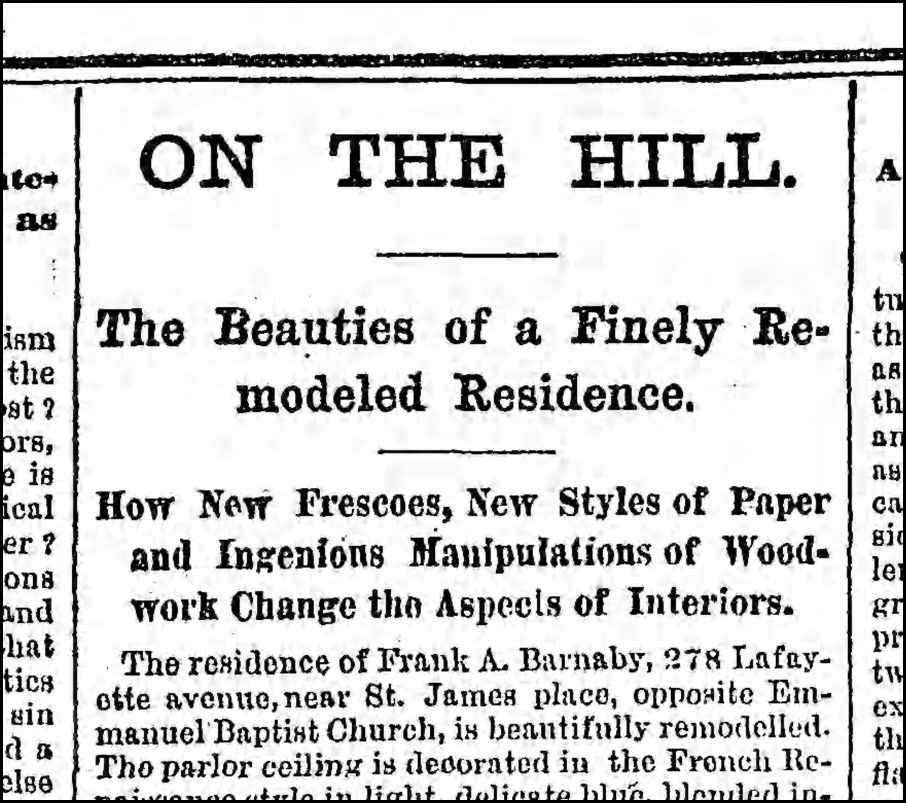
These residences, today usually more than 120 years old, are often in great need of such assistance in the form of strengthening walls, laying on new roofs, and general repair of utilities and fixtures throughout the houses.
Reading about the remodeling of a brownstone in 1888, however, is a step-back in renovation time.
At No. 278 Lafayette Avenue, in the Clinton Hill section of Brooklyn, more than 130 years ago, just such a grand brownstone mansion was being remodeled to suit the tastes of new owner – Frank A. Barnaby.
Although the property was little more than 15 years old at the time, Barnaby had money. He was a single man of approximately 35 who wanted to show his taste in brownstone remodeling. He, thus, hired George Halbert, a well-known designer of the time, who put the force of his imagination into reworking the interior of Barnaby’s house and redid the property’s design through his vision of the French Renaissance period.
A newspaper article, describing the “remodeling,” exists as a sort of road map, giving an indication as to what the house looked like after the remodel, its layout, and what it contained. Ironically, such a story also helps the homeowners today to visualize how the property looked more than a century ago, and, although a bit over the top in terms of design, can assist them in conducting a modern day renovation.
The article, little more than a vanity piece then, also existed to serve as an advertisement for the designer, Halbert.
(WE’LL START IN) THE PARLOR
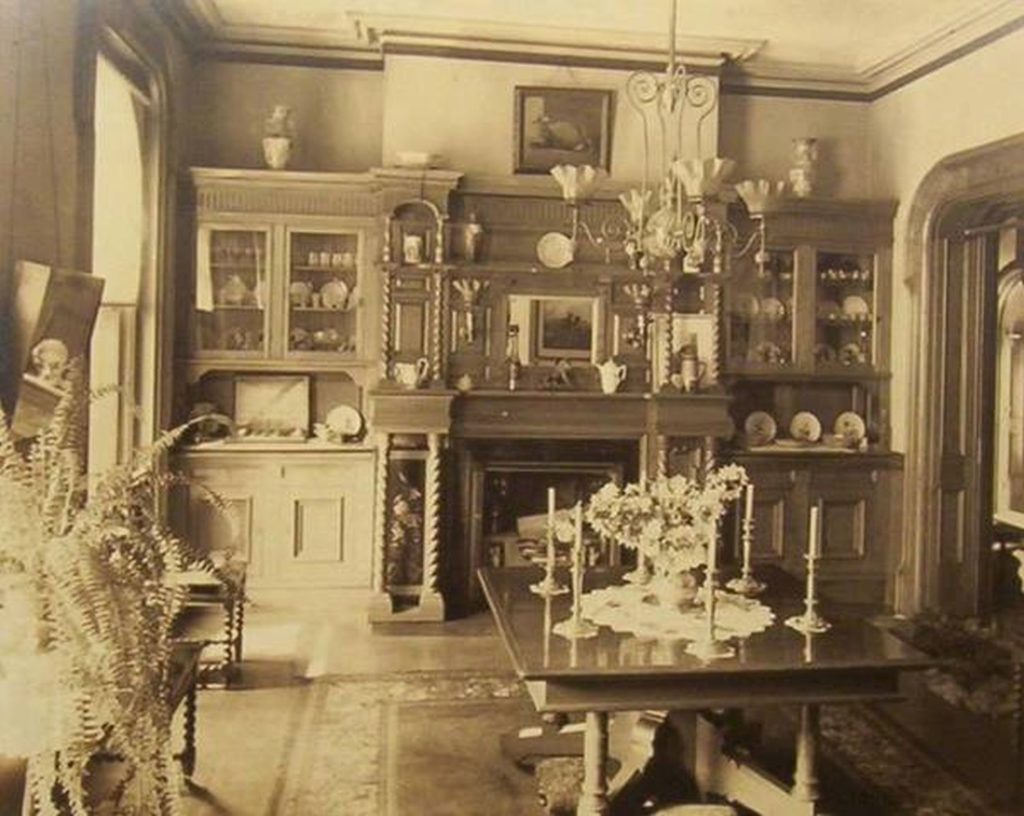
“The residence of Frank A. Barnaby, 278 Lafayette Avenue, near St. James place, opposite Emmanuel Baptist Church, is beautifully remodeled,” started the Brooklyn Daily Eagle.
“The parlor ceiling is decorated in the French Renaissance style in light, delicate blue, blended in to a light cream color, with cornices finished in shades of yellow relieved with gold, with frieze blended from blue into yellow at the top. The walls are painted in rough stipple, finished in cream yellow, with enameled picture molding two inches wide, relieved with gold. The woodwork is mahogany, natural finish, with mantel of hardwood mahogany, gas fixtures of antique brass, with cluster candles.
“The back parlor (dining room) ceiling is decorated in Italian Renaissance, in relief, in shades of cafe au lait, relieved with gold. The frieze, three feet wide, is in running vines and relief work in shades of cafe au lait and relieved with gold. The walls are painted in rough stipple, dado six feet high and damask work finish in shades of terra cotta. The moldings, woodwork and mantel are of antique oak, with parquet flooring and gas fixtures of polished iron.
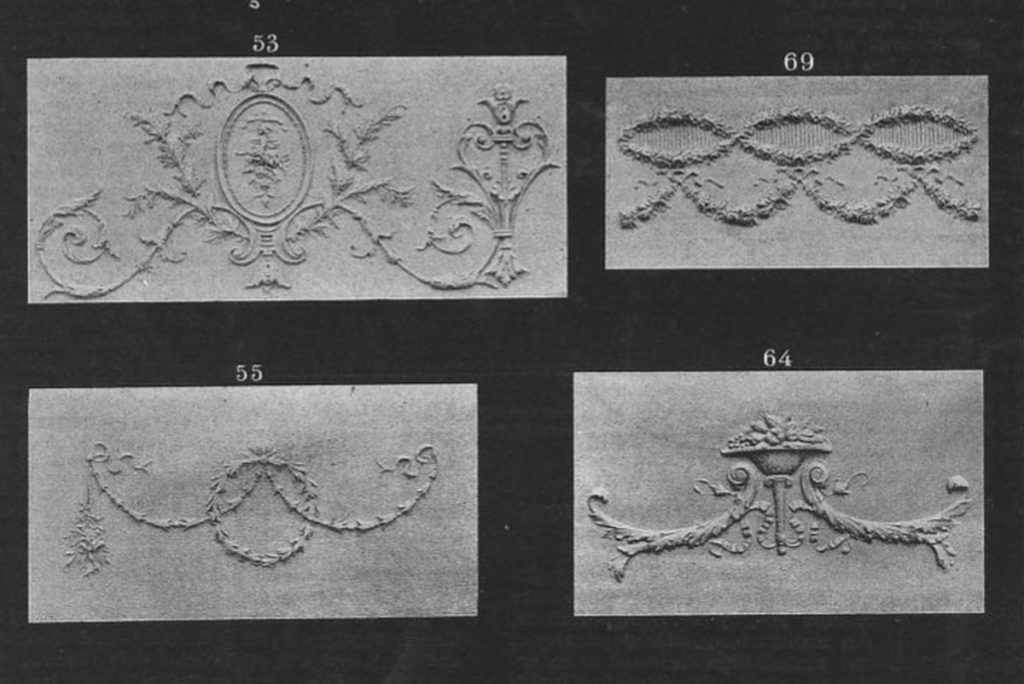
“The hall ceiling is decorated in bas relief in salmon pink with relief ornament. The walls are decorated in bas relief in shades of correspond with the ceiling, without frieze, with platform stairs in antique oak, balustrade and newel posts.
“The inner vestibule is paneled in Moorish fretwork. The ceiling is decorated in bas relief in shades of yellow and salmon pink. The walls are decorated in bas relief in shades of yellow blended from the top of wainscoting in shades of terra cotta. The wainscoting, five feet high, is paneled in antique oak with flooring, new settee and screen work, with gas fixtures of old iron.”
THE SECOND STORY
“The ceiling of the second story front room is decorated in shades of old blue blended lighter and lighter toward the center, with a spider web design all over the ceiling in silver leaf. The side wall is of blue, in two shades of chintz pattern, with frieze, four feet wide, of luster paper in shades of blue. The picture molding is ivory white and gold, with woodwork finished in ivory white and mantels to correspond and gas fixtures of antique silver candles.
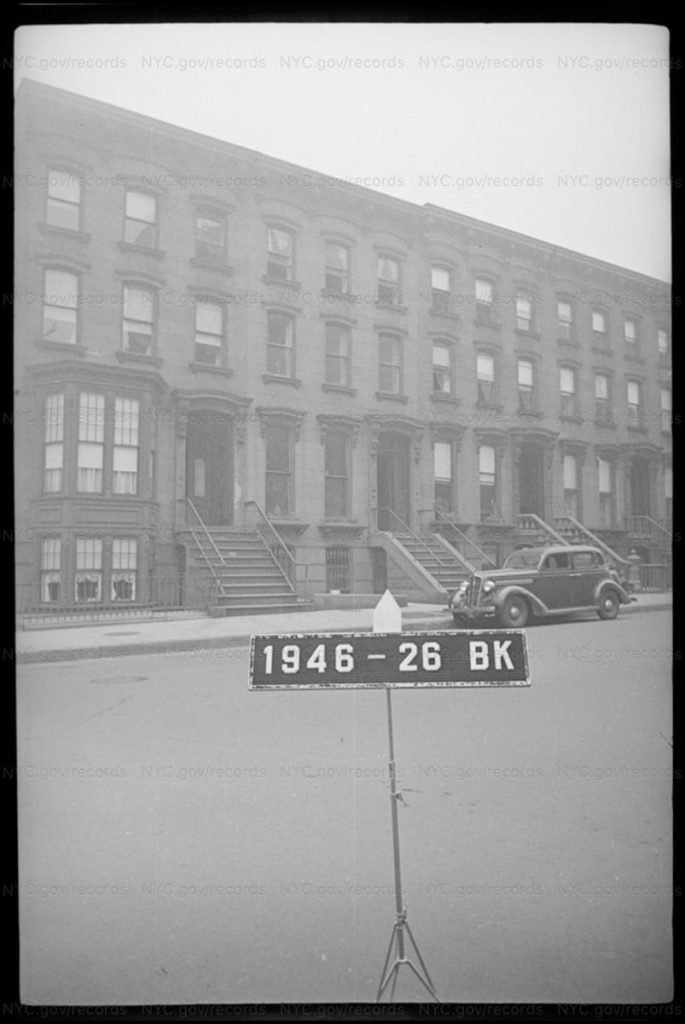
“The second story ceiling of the back room (library), is decorated in shades of sage green relieved with gold. The walls are papered with a sage green paper, with frieze three feet wide of floral design, in shades of olive and salmon pink. The moldings, woodwork, mantel and cabinet are of antique oak, and there is parquet flooring.
“The bathroom ceiling is done in shades of salmon pink, in bas relief, with frieze on top of the wainscoting, two feet wide, blended from terra cotta into a blue. The woodwork is finished in walnut.”
THE THIRD STORY
“The ceiling of the third story front room is decorated in shades of cafe au lait. The walls are papered in salmon pink, with frieze in cafe au lait and copper, with enameled molding finished in shades of salmon pink, and woodwork arranged in shades of salmon pink.
“The back room ceiling is decorated in shades of yellow, with walls in yellow paper, chintz, of two shades, and floral frieze, two feet wide, in shades of yellow and olive, with wood work and picture mouldings in shades of yellow. The gas fixtures are of antique brass.
“The front hall room ceiling is done in cream color, with frieze two feet wide, cream and pink, chintz sateen. The walls are papered in two shades of cream, with woodwork of the same color. The single vestibule door is of antique oak, with sidelights and grills of old iron, hinges, plates, etc. There are new side loop, new sidewalk, patent pavement and front windows of antique oak. Work by (George) Halbert.”
———————————————————————————————————————–
 Brownstone Detectives is an historic property research agency. Our mission is to document and save the histories of our clients’ homes. From our research, we produce our celebrated House History Books and House History Reports. Contact us today to begin discovering the history of your home.
Brownstone Detectives is an historic property research agency. Our mission is to document and save the histories of our clients’ homes. From our research, we produce our celebrated House History Books and House History Reports. Contact us today to begin discovering the history of your home.